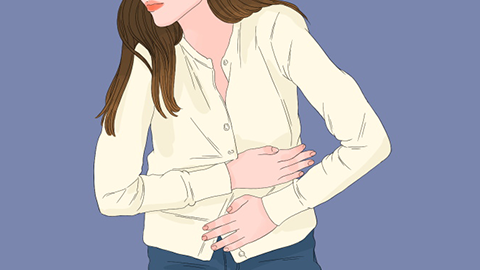What causes light menstrual flow and dark brown color?
Light menstrual flow and dark brown color may be caused by excessive dieting, mental stress, polycystic ovary syndrome, endometritis, or intrauterine adhesion. Management depends on the specific situation. It is recommended to seek medical advice promptly, identify the cause through examination, and follow medical instructions for treatment.

1. Excessive dieting: Prolonged excessive dieting leading to insufficient nutrient intake and reduced fat reserves can affect estrogen synthesis, resulting in thinning of the endometrium and reduced menstrual flow. Menstrual blood remaining in the uterine cavity for a long time appears dark brown. It is recommended to resume normal eating habits, ensure balanced nutrition, and consume more protein- and iron-rich foods such as meat and legumes to improve nutritional status and promote the resumption of normal menstruation.
2. Mental stress: Long-term mental tension and anxiety can interfere with endocrine regulation and affect ovarian function, resulting in reduced menstrual flow. Poor menstrual blood discharge can lead to darker coloration. It is important to learn stress-reduction techniques, such as yoga or listening to music, to relax and maintain a positive mindset, thereby stabilizing the endocrine system and improving menstrual conditions.
3. Polycystic ovary syndrome: Caused by endocrine and metabolic abnormalities with multiple small cysts in the ovaries. Symptoms include light menstrual flow, irregular menstrual cycles, hirsutism, and obesity. Patients can take medications such as letrozole tablets, metformin hydrochloride tablets, and spironolactone tablets under medical guidance to alleviate symptoms.
4. Endometritis: Inflammation caused by pathogens such as bacteria invading the endometrium damages the normal structure of the endometrium, causing light menstrual flow and dark brown coloration, often accompanied by lower abdominal pain and abnormal vaginal discharge. It is recommended to take medications such as metronidazole tablets, cefaclor capsules, and gynecological qianjin tablets under medical guidance to relieve discomfort.
5. Intrauterine adhesion: Often caused by intrauterine procedures such as induced abortion. Damage to the endometrium leads to partial or complete adhesion of the uterine cavity, resulting in reduced menstrual flow and abnormal menstrual blood color. Patients may experience cyclical abdominal pain and other symptoms. Patients can take medications such as estradiol valerate tablets, progesterone capsules, and compound xuanju capsules according to medical advice to promote recovery.
In daily life, adjusting lifestyle, reducing stress, maintaining healthy eating habits, and engaging in moderate exercise can benefit overall health.
References:
[1] Wu Juan, Dong Xiaohua, Zhang Qunqing. Analysis of the diagnostic value of three-dimensional ultrasound in evaluating endometrial blood flow parameters for intrauterine adhesion[J]. Laboratory Medicine and Clinical, 2023, 20(02): 220-223+227.
[2] Liu Dongmei, Wang Jiejie, Zhang Jinling, et al. Relationship between serum adrenocorticotropic hormone, anti-Müllerian hormone, sex hormones, and pregnancy outcomes in patients with infertility due to polycystic ovary syndrome[J]. Maternal and Child Health Care of China, 2025, 40(04): 680-683.




